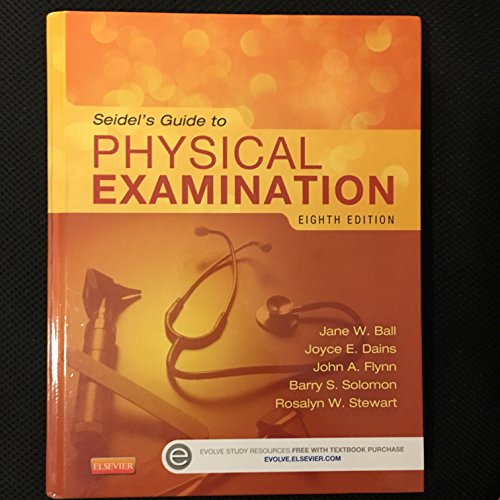Seidel's Guide to Physical Examination is a comprehensive textbook of physical examination, history-taking, and health assessment with a unique emphasis on differential diagnosis and variations across the lifespan. The book conveys a uniquely compassionate, patient-centered approach to physical examination with a strong evidence-based foundation.
- Evidence-Based Practice in Physical Examination boxes supply you with current data on the most effective techniques for delivering quality patient care.
- Clinical Pearls lend insights and clinical expertise to help you develop clinical judgment skills.
- Functional Assessment boxes present a more holistic approach to patient care that extends beyond the physical exam to patients’ functional ability.
- Staying Well boxes focus you on patient wellness and health promotion.
- Risk Factor boxes provide opportunities for patient teaching or genetic testing for a variety of conditions.
- Differential diagnosis content offers you an understanding of how disease presentations vary and specific information for how to make diagnoses from similar abnormal findings.
- Abnormal Findings tables equip you with a quick, illustrated reference that allows for comparisons of various abnormalities along with key symptoms and underlying pathophysiology.
- Sample Documentation boxes clarify appropriate professional language for the process of recording patient assessment data.
- NEW! Advance Practice Skills highlighted throughout text makes identification and reference easier for students.
- NEW! Updated content throughout provides you with cutting-edge research and a strong evidence-based approach to care.
- NEW! Vital Signs and Pain Assessment Chapter groups important, foundational tasks together for easy reference in one location.
- NEW! Improve readability ensures content remains clear, straightforward, and easy to understand.
- NEW! Updated illustrations and photographs enhances visual appeal and clarifies anatomic concepts and exam techniques.
"This book has all the essential information that a primary physician needs, relating to history taking and physical examination of patients, as well as developing a positive and effective relationship with them based on mutual understanding. It is well organized, with textual and visual materials including high-quality boxes, charts, drawings, micrographs, photos, and tables. You’ll also find tabs on page edges to quickly refer to something. At the end of this book, you will find a References and Readings section for deeper studying of abnormalities, anomalies, conditions, diseases, and disorders. You will also find a Glossary to under the meanings of unfamiliar terms or get the exact meanings of familiar terms." ~Nano Khilnani
